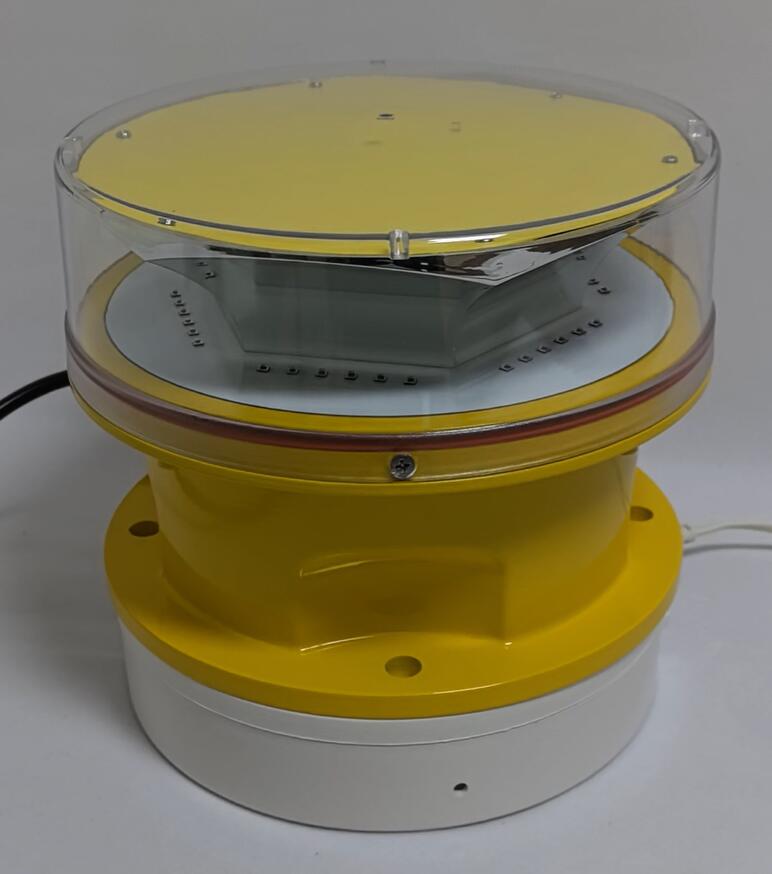Posted: 2024-09-04
In the realm of aviation, safety is paramount. Among the many elements that contribute to the safe operation of aircraft, LED aircraft warning lights stand out as essential beacons that ensure the visibility and protection of aircraft in the skies.
LED, or light-emitting diode, technology has brought about a significant transformation in the field of aircraft warning lights. These lights are designed to be highly visible from a distance, alerting other pilots, air traffic controllers, and people on the ground to the presence of an aircraft. The use of LEDs offers several advantages over traditional lighting sources.
| LED aircraft warning lights | frg | 45FG |
One of the key benefits of LED aircraft warning lights is their energy efficiency. LEDs consume much less power than traditional incandescent or halogen bulbs. This is particularly important for aircraft, where power consumption needs to be carefully managed to ensure the efficient operation of various systems. The reduced power consumption also helps to extend the battery life of aircraft, especially in cases where backup power sources are crucial.
Durability is another significant advantage of LED aircraft warning lights. Aircraft are subjected to a wide range of environmental conditions, including vibrations, temperature extremes, and exposure to moisture and dust. LEDs are highly resistant to these factors, making them ideal for use in the demanding environment of an aircraft. They have a long lifespan and are less likely to fail compared to traditional lights, reducing the need for frequent replacements and minimizing maintenance costs.

The visibility of LED aircraft warning lights is also a major advantage. LEDs emit a bright, intense light that can be seen from a great distance, even in poor visibility conditions such as fog, rain, or at night. This increased visibility helps to prevent collisions between aircraft and other objects, enhancing the safety of air travel. Additionally, LED lights can be programmed to flash or strobe at specific intervals, further increasing their visibility and attracting attention.
LED aircraft warning lights come in a variety of types and configurations to meet the specific needs of different aircraft and applications. Some common types include steady-burning lights, flashing lights, and rotating beacons. These lights can be installed on the exterior of the aircraft, on the wings, tail, or fuselage, depending on the requirements.
In addition to their role in enhancing safety, LED aircraft warning lights also play an important part in regulatory compliance. Aviation authorities around the world have strict requirements regarding the installation and operation of aircraft warning lights to ensure the safety of air traffic. LED lights are designed to meet these regulations and provide reliable performance in all conditions.
The installation and maintenance of LED aircraft warning lights require specialized knowledge and skills. Trained technicians must ensure that the lights are properly installed, aligned, and functioning correctly. Regular inspections and maintenance are also necessary to ensure the continued reliability and effectiveness of the lights.
As technology continues to advance, we can expect to see further improvements in LED aircraft warning lights. New materials and designs may offer even greater durability, energy efficiency, and visibility. Additionally, integration with other aircraft systems, such as navigation and communication systems, may provide enhanced safety features and capabilities.
LED aircraft warning lights are a critical component of aviation safety. Their energy efficiency, durability, visibility, and regulatory compliance make them an essential tool for ensuring the safe operation of aircraft in the skies. As the aviation industry continues to evolve, these lights will play an increasingly important role in protecting the lives of passengers, crew, and people on the ground.